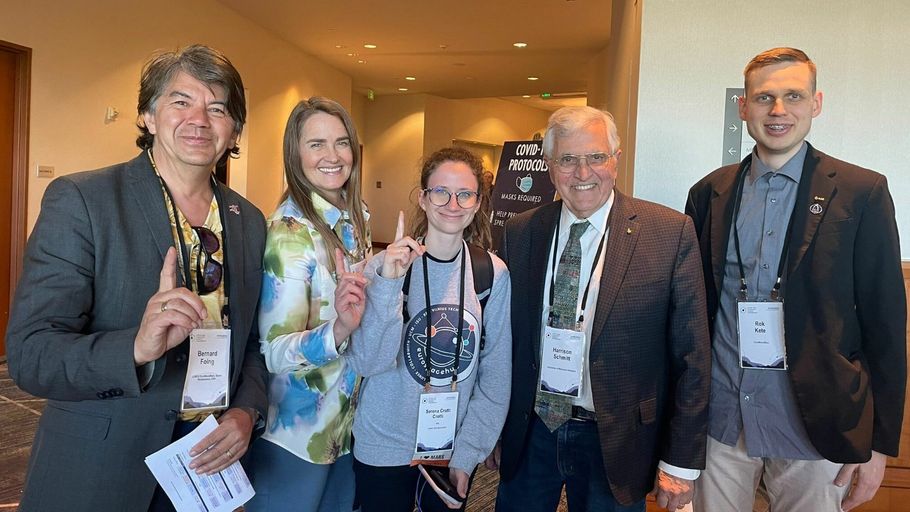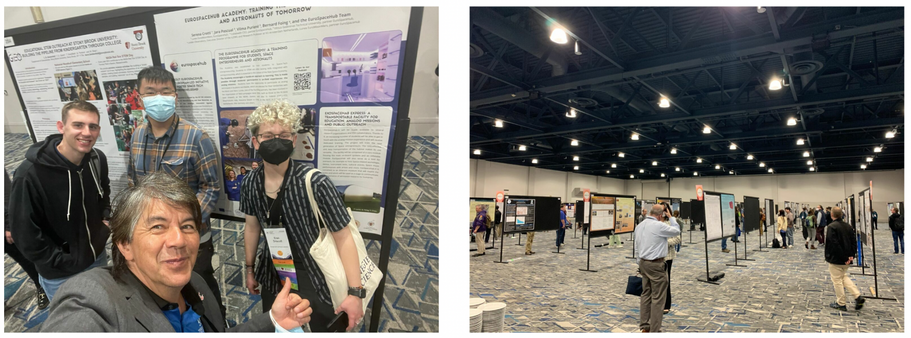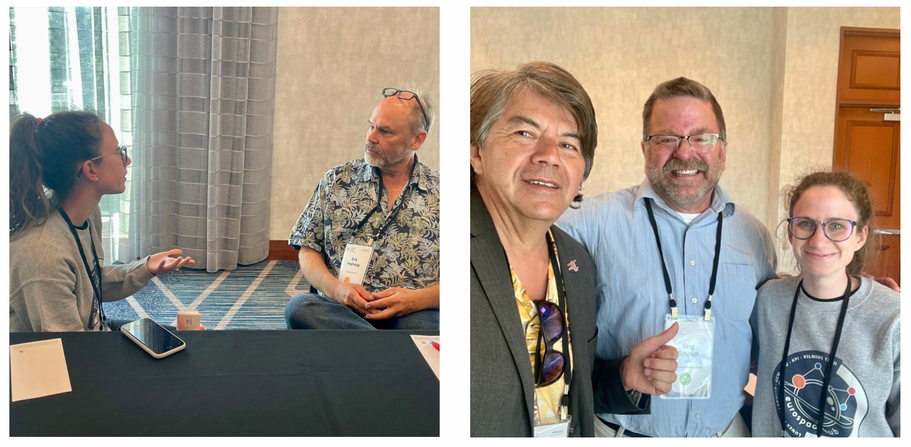News from March | LPSC 2023 in Houston, 13-17 March 2023

EuroMoonMars crew with Apollo 17 Astronaut Harrison Schmitt
13th-17th March, The Woodlands: five amazing days of Planetary Science, Space Technology Programs and networking!
A very important event for the Space Science community took place in The Woodlands, near Houston, Texas (US), from 13th to 17th March. It is the Lunar Planetary Science Conference (LPSC), an annual gathering of top scientists, researchers, managers, early career scientists and students in the field. The conference has a long-standing tradition, having first been established in 1970. At the time it was called the “Apollo 11 Lunar Science Conference”. Over the years it has evolved into an annual event, with international scope, gathering a large number of presenters. Speaker contributions are reviewed by a dedicated committee, that selects the two thousand abstracts submitted by international scientists and researchers. EuroSpaceHub and Lunex EuroMoonMars participated in person, with two on-site correspondents, Bernard Foing and Serena Crotti, joined by students from the EuroSpaceHub Academy and EuroMoonMars.
The representatives showcased the results of the EuroSpaceHub project to an international audience within the Poster Session, where EuroSpaceHub had a well-established presence thanks to two dedicated abstracts: “EuroSpaceHub: A European-Led Project to Facilitate Entrepreneurship, Innovation, Accessibility, Inclusion and Diversity in the Space-Tech Ecosystem Accessibility, Inclusion and Diversity in the Space-tech Ecosystem” (S. Crotti, J. Pascual, V. Puriene, B. Foing and EuroSpaceHub EuroMoonMars Teams). This abstract was an overview of the EuroSpaceHub project’s efforts to promote collaboration, innovation, entrepreneurship and access to funding opportunities in the aerospace sector and was presented within the session “A Diverse and Inclusive Planetary Community: Who We Are and Can Be.” “EuroSpaceHub Academy: training the Space Entrepreneurs and Astronauts of tomorrow” (S. Crotti, J. Pascual, V. Puriené, B. Foing and EuroSpaceHub EuroMoonMars Teams). This abstract introduced the concept of the EuroSpaceHub Academy and its vision of analog missions for training entrepreneurial and innovation skills in students and young professionals. The contribution was presented within the Poster session entitled “Workforce Development and Education: Programs and Tools for Building the Future Planetary Community.” In addition, the results of the EuroSpaceHub Academy and the recent EMMPOL missions (an initiative of the Analog Astronaut Training Center in Poland and Lunex EuroMoonMars, co-sponsored by EuroSpaceHub), were presented in a dedicated contribution entitled, “Student Research in an Analog Lunar Habitat: EuroMoonMars and Analog Astronaut Training Center Poland EMMPOL 2023 Campaigns 14 and 15 Astronaut Training Center Poland EMMPOL 2023 Campaigns 14 & 15” (A. Hutchison, Foing B, M. Gil Natividad, M. Wurtz-Pra S. Hayes C. et al.). In this poster, student research from EMMPOL Campaigns 14-15 in 2023 inside their isolated lunar analog habitat was presented. The contribution was included in the Poster session “Operational Analogues and Technology Demonstration.”

One of the two EuroSpaceHub posters presented in the Poster Hall (left), Poster Hall at Waterbay Marriott Hotel before the session (right)
In addition to these three main contributions, several other abstracts were presented in the context of the EuroSpaceHub Academy and individual student research from ISU, EPFL Lausanne, and Leiden University, for a total of ten abstracts presented. Check out our social media if you are interested in learning about the projects our students worked on; we interviewed some of them for you!

Students from EuroSpaceHub Academy EPFL Lausanne & posters: Lina Kulmann with a dust experiment for Lunar Gateway Orbit, Lucile Siegfried with mission to Neptune, Ryan Darcy with Europa lander concept
The atmosphere in the LPSC corridors was crisp, and we met interesting personalities over the course of those busy days. Coffee breaks are as usual a great time for networking and sharing conversations with speakers after their presentations. Our on-site correspondents tried to capture the spirit of this conference by interviewing some of the presenters and participants to the conference. We had the pleasure of exchanging ideas and views with Jacob Bleacher, Chief Exploration Scientist at NASA; Laurie Leshin, Director of NASA Jet Propulsion Laboratory; Nancy Chabot, of the John Hopkins Applied Physics Laboratory; Dan Hendrickson, of Astrobotic Technology Inc; Nadeem Ghafoor, CEO of Avalon Space; Sylvestre Maurice, of IRAP (CNRS, University of Toulouse and CNES); Thomas Widemann, Paris Observatory’s Laboratory of Space and Instrumentation Studies (LESIA); and Jani Radebaugh, Brigham Young University. We were also able to conduct two special interviews directly from the LPSC23 press room. The first one with Erik Asphaug, Scientist and Professor of Planetary Science at the University of Arizona; the second one with Greg Schmidt, Director of the Solar System Exploration Research Virtual Institute (SSERVI) at NASA Ames Research Center.

Setting up the interview with Erik Asphaug, professor expert on impacts and Moon formation at University of Arizona (left) and after our interview with Greg Schmidt, Director of SSERVI institute at NASA Ames Research Center (right)
Also… hang on to your hats! We succeeded in getting an interview with Harrison Schmitt, the legendary astronaut of the Apollo 17 mission. Harrison Schmitt is a renowned geologist, professor, scientist and astronaut. The scientific community looks up to him, being the first member of the group of NASA scientists to fly into Space, in 1972. In addition, Schmitt is now the most recent living person who has set foot on lunar soil. During the Apollo 17 mission, Schmitt was able to stay on the lunar surface for three days as Lunar Module Pilot. During the mission – the last in NASA’s Apollo program – astronauts conducted three EVAs lasting seven hours each to explore the area known as Taurus-Littrow Valley. An expert geologist, Schmitt participated in LPSC 2023 as a speaker, in a talk titled “Continuously (“Permanently”) Shadowed Lunar Regolith Sampled by Apollo 17: Key Tests of Regolith Temperature Storage for Artemis”, as part of the session “Physical Properties in the Artemis Exploration Zone”. During the interview, we asked the astronaut what skills he found important to become an astronaut and then to be selected among the few to fly to the Moon. His answer is clear: mastering technical and scientific knowledge and skills is fundamental, “There is one fundamental skill that gave me a chance to be an astronaut: that was Field Geology (…) It is important for Artemis to have a training program that helps the pilot and other crew members to have different skills, to be able to help the field geologists in the missions” (Harrison Schmitt
(Astronaut Apollo 17 Mission in 1972).
You can find the full interview to astronaut Harrison Schmitt, multimedia contents and insights from the conference on the official Instagram pages of @eurospacehub and @euromoonmars.
CONTACT US
Address : Keplerlaan 1, 2201 AZ Noordwijk, The Netherlands
Email : aojohn928@gmail.com

